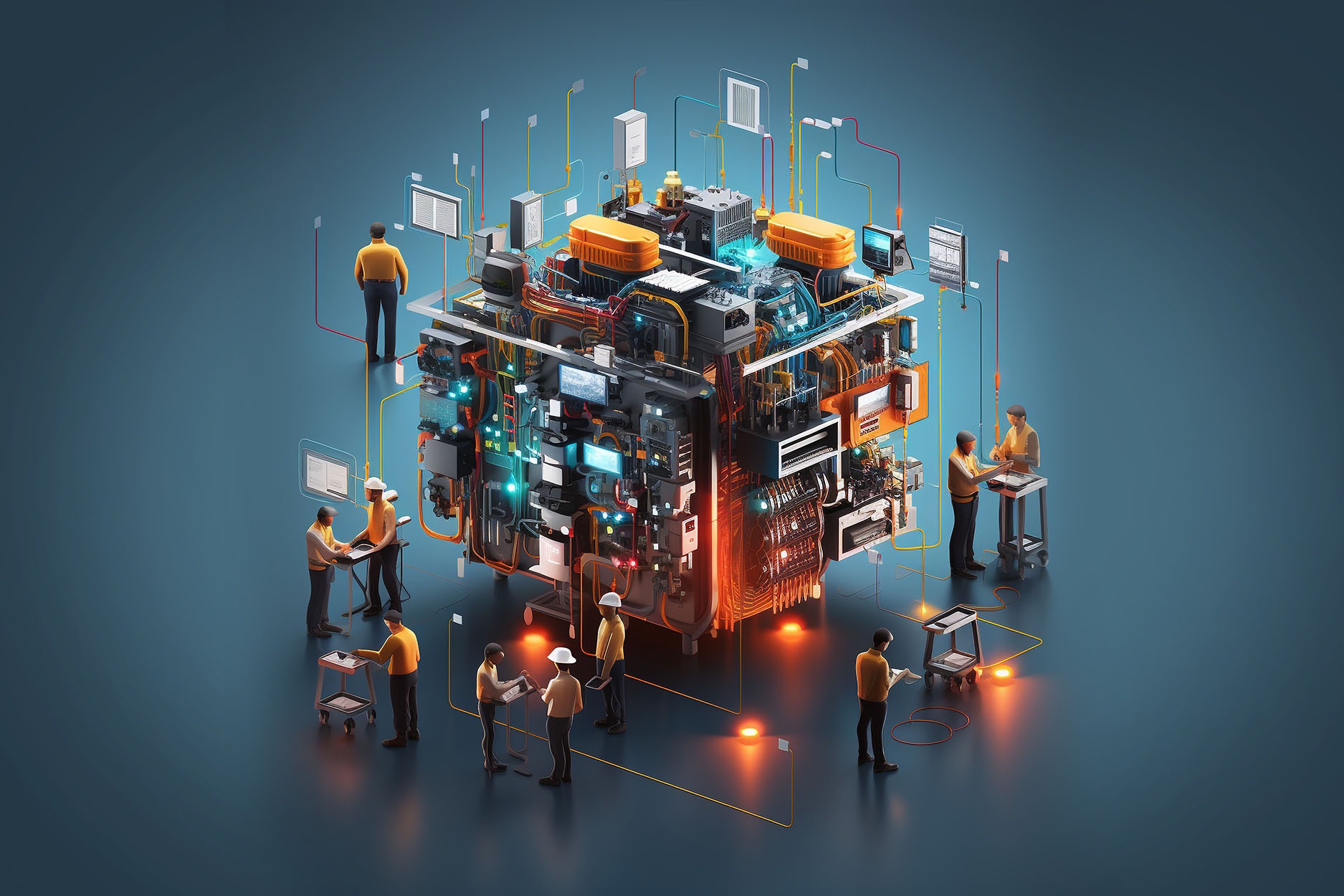AI-Powered Business Transformation
AI for your future. Automate, gain insights, transform.

The phrase “hyper-automation” has gained a lot of popularity recently, especially in the business and technology sectors. It refers to the integration and deployment of cutting-edge technologies like robotic process automation (RPA), artificial intelligence (AI), and machine learning (ML) in order to automate and simplify various operations and processes within an organization. This blog examines the idea of hyper-automation and how it significantly affects workflows, illuminating how it transforms how companies run.
By integrating several state-of-the-art technologies, hyper-automation goes beyond ordinary automation and completely automates complicated workflows and procedures. Through the utilization of AI for data analysis, ML for process optimization, and RPA for job execution, enterprises may attain unsurpassed levels of productivity, accuracy, and efficiency. This all-encompassing approach to automation makes sure that jobs are finished smoothly and with the least amount of human involvement, which enables businesses to run more successfully and efficiently.
Automating boring and repetitive processes is one of the biggest effects of hyper-automation on workflows. Employees are freed from the tediousness of repetitive work by this automation, allowing them to concentrate on more strategically important tasks. As a result, there is a notable improvement in employee engagement and satisfaction, in addition to productivity. Employees are no longer burdened by monotonous work; instead, they can engage in larger projects that drive business growth.
Hyper-automation also lowers errors and streamlines procedures. Organizations can guarantee precise and efficient completion of tasks by employing innovative technology for data analysis and decision-making. This accuracy improves overall performance and turnaround times, which strengthens the organization’s capacity to quickly satisfy client and market demands. The capacity to promptly adjust to evolving business requirements is an additional crucial benefit of hyper-automation. In today’s fast-paced business world, automated processes enable firms to remain flexible and competitive by allowing them to scale up or down based on demand without requiring manual involvement.
Adopting hyper-automation is not without its difficulties, though. The possibility of job displacement when tasks become automated is one of the main worries. Employers need to think carefully about retraining and upskilling staff members so they can adjust to the ever-changing environment. It is essential to fund training and development initiatives in order to provide staff members with the competencies required to collaborate with automated systems. Furthermore, it is impossible to ignore the ramifications of hyper-automation for privacy and security. Utilizing modern technology raises the possibility of cyberattacks and data breaches. Thus, it is imperative that businesses put strong security measures in place to safeguard confidential data and guarantee legal compliance.
Hyper-automation must be strategically implemented, which calls for careful planning and well-defined governance procedures. Establishing oversight is necessary for organizations to keep an eye on the effectiveness of automated workflows and handle any potential problems. Through the resolution of these issues and concerns, companies can optimize the advantages of hyper-automation and guarantee sustained prosperity. The use of hyper-automation results in workflows that are more optimized and simplified, which raises total operational efficiency. This digital shift improves teamwork and communication by making tasks and protocols more standardized and obvious.
Moreover, hyper-automation facilitates data-driven decision-making and strategy planning by allowing firms to obtain insightful information from data analytics. Businesses can use this capacity to recognize patterns, forecast results, and make well-informed decisions that spur expansion and creativity. Organizations can achieve unprecedented levels of efficiency and competitiveness in the current digital ecosystem by adopting hyper-automation.
To sum up, hyper-automation is a potent instrument that has the potential to completely transform organizational workflows. Utilizing cutting-edge technologies like AI, ML, and RPA helps businesses increase productivity, accuracy, and efficiency. To fully realize the advantages and guarantee long-term success, companies must handle the related issues and concerns. Through the implementation of strong security protocols, employee training, and well-defined governance, firms may effectively leverage hyper-automation to achieve unprecedented levels of efficiency and competitiveness in the ever-changing business landscape of today.
Need a tailored solution? Let us build it for you.
Connect Today